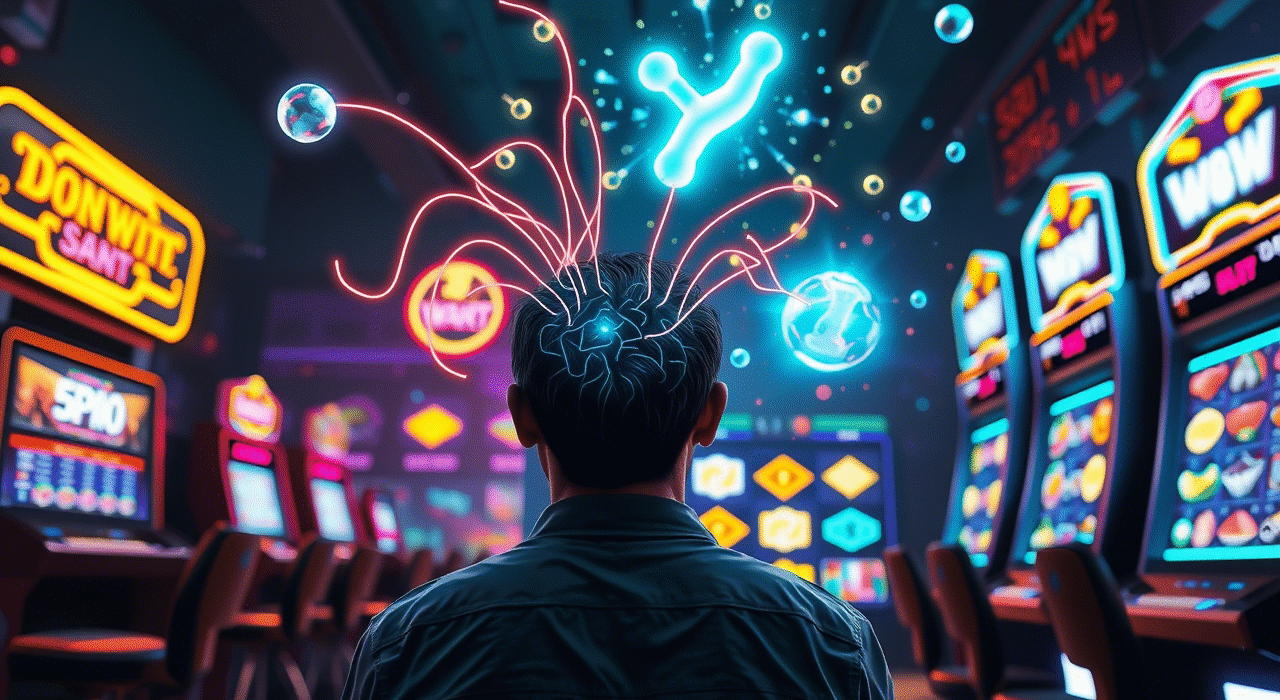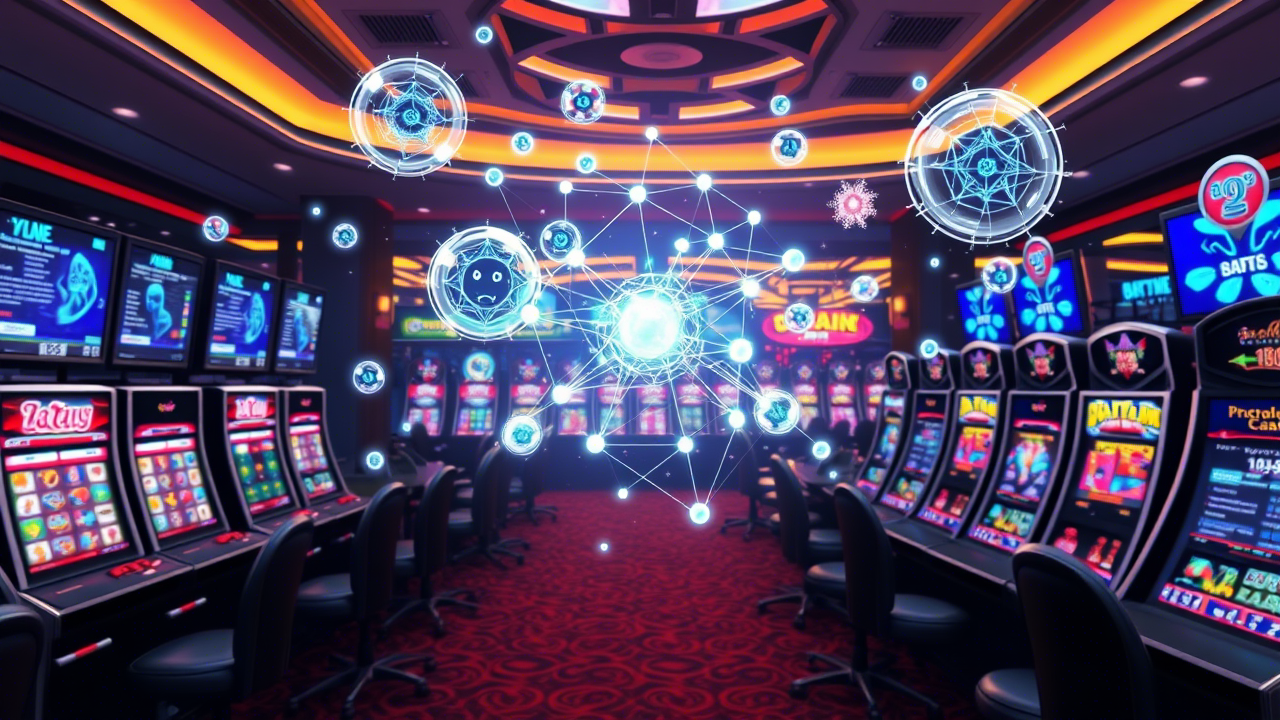🎮 Why You Can’t Stop Spinning
Ever told yourself, “Just one more spin,” only to look up and realize 45 minutes have passed? That’s not luck. That’s design—and it’s no accident.
Modern gambling games are engineered using behavioral psychology, neuroscience, and UX design to do one thing exceptionally well: keep players playing. Every animation, sound, win celebration, and even moment of near-miss is part of a meticulously crafted experience designed to light up the brain’s reward system.
In this exposé, we dive into the dark (and dazzling) art of psychological game design in the iGaming world—and how it’s evolved to capture not just attention, but emotion, habit, and loyalty.
🧠 It Starts in the Brain: The Dopamine Loop
The most fundamental weapon in the game designer’s arsenal is dopamine—the neurotransmitter responsible for pleasure, anticipation, and learning.
Here’s how it works:
- You spin a slot.
- You almost win—two jackpot symbols appear but not the third.
- Your brain releases dopamine not because you won, but because you might have.
This anticipation of reward, known as the “dopaminergic drip”, is incredibly powerful. In fact, variable ratio reinforcement schedules—where rewards come unpredictably—are the same psychological hooks used in:
- Slot machines
- Lottery scratch cards
- Social media likes
- Mobile game loot boxes
🎰 The Mechanics of Hooking a Player
Let’s break down the key psychological tricks used in game design to boost retention and session time.
1. Near-Misses
That moment when you almost hit a jackpot? Not a bug—it’s a feature.
Studies show that near-misses activate similar areas of the brain as actual wins. Slot designers intentionally include near-miss logic to create frustration-based excitement.
“Almost winning makes the player more likely to keep playing than actually winning.”
— Dr. Luke Clark, Cambridge Neuropsychology Unit
2. Celebratory Feedback
Even tiny wins often trigger outsize celebratory visuals and sounds:
- Coin explosions
- Flashing lights
- Victory music
This is done even when you win less than your bet. Why? Because the perceived reward still feels like a success.
It’s called “loss disguised as win” (LDW)—a tactic used to maintain momentum and dopamine levels.
3. Bonus Teases
Many games now include elaborate bonus build-ups:
- Scatters landing with suspenseful drum rolls
- Reels slowing down as the last bonus symbol approaches
- Glowing animations, vibrating devices, escalating sound effects
Even if the bonus doesn’t land, the emotional spike primes players for more spins.
4. Infinite Scroll Mechanics
Much like Instagram or TikTok, slot and betting apps increasingly use endless scroll interfaces and fast re-entry loops:
- No exit confirmation
- Quick re-spin buttons
- Countdown bonuses
- Dynamic leaderboards
All these features create low friction and high velocity, reinforcing compulsive interaction.
5. Progress Bars and Unlockables
Incorporating elements from video games, many modern slots feature:
- Level-ups
- Collection mechanics (e.g., collect 10 diamonds to trigger bonus)
- Missions and challenges
These trigger what’s called the Zeigarnik effect—our brain’s tendency to remember unfinished tasks more than completed ones.
6. Sound Design and Reward Tones
The “ding” you hear when you win? That’s not just sound—it’s conditioning.
- Win sounds = joy
- Bonus sounds = hope
- Reel clicks = anticipation
Many studios hire professional audio psychologists to craft FX that trigger pavlovian responses, enhancing emotional feedback loops.
🛠️ Psychological Game Design in Sportsbooks & Live Casinos
It’s not just slots. Sportsbooks and live dealer games are also optimized using similar principles.
In Sportsbooks:
- Live betting odds adjust dynamically to encourage impulsive bets.
- Countdown timers increase urgency.
- “Boosted odds” and “Flash Bets” use fear of missing out (FOMO) psychology.
In Live Casinos:
- Dealers smile, engage, and celebrate wins to mimic social interaction.
- Camera angles and table views are designed for immersion and illusion of control.
- Leaderboards create competitive drive even among solo players.
📱 Mobile Optimization: Addiction in Your Pocket
The rise of mobile gambling has intensified psychological design:
- Push notifications are timed to coincide with known activity windows.
- Games load in under 3 seconds to reduce decision friction.
- Touch gestures mirror addictive mobile apps.
- App stores often hide “real money” tags, softening mental resistance.
Mobile-first game design focuses on short bursts of dopamine delivered frequently—a model borrowed from Candy Crush and Clash Royale.
🚩 When It Crosses a Line
This level of psychological sophistication has invited criticism. Critics argue that certain design techniques blur the line between entertainment and manipulation.
“You’re not just designing games. You’re designing behavior.”
— Natasha Dow Schüll, author of Addiction by Design
Governments and regulators are starting to notice:
- The UK’s Gambling Commission banned auto-spin and celebrations of losses in 2021.
- Germany mandates a 5-second gap between spins.
- Belgium and the Netherlands have banned loot box-style elements.
Studios must now balance retention with responsible gaming principles—an evolving ethical battleground.
🧑🔬 Expert Interviews
Dr. Anika Rao, Behavioral Psychologist in iGaming UX:
“Games today are effectively emotion machines. They don’t just respond to you—they shape your feelings and predict your reactions.”
Max Bellamy, UX Designer at a European Studio:
“Our job isn’t just to make games look good. It’s to make them feel rewarding—even when players are losing. That’s the psychological frontier.”
Olivia T., Compliance Lead at a Tier-1 Operator:
“We’re constantly walking a tightrope. We want games to be engaging but not predatory. The moment a player feels manipulated, you’ve lost long-term trust.”
💡 The Future: Ethical Psychology and AI Personalization
What comes next?
1. AI-Driven Player Modeling
Games will soon adapt in real time based on a player’s emotional and behavioral profile. This means:
- Personal volatility settings
- Adaptive bonuses
- Custom pacing
This can boost both engagement and responsible gaming—if applied ethically.
2. Emotion Recognition
Using device sensors and face-reading software, studios are experimenting with games that adjust based on your facial expressions or tone of voice. Yes, really.
3. Transparent Design Labels
Just like “nutrition facts” on food, regulators may mandate psychological transparency—telling players how the game is designed to affect their mood or behavior.
📌 Final Thoughts
Gambling games today are no longer mere luck-based entertainments—they’re precision-built neuro-experiences rooted in reward science, game theory, and emotional choreography.
Understanding the psychology behind these games doesn’t make them less fun. But it makes you a smarter, more informed player—and potentially more resilient against manipulation.
So next time a game sucks you in for “just one more spin,” ask yourself:
“Was that my decision—or the design’s?”











